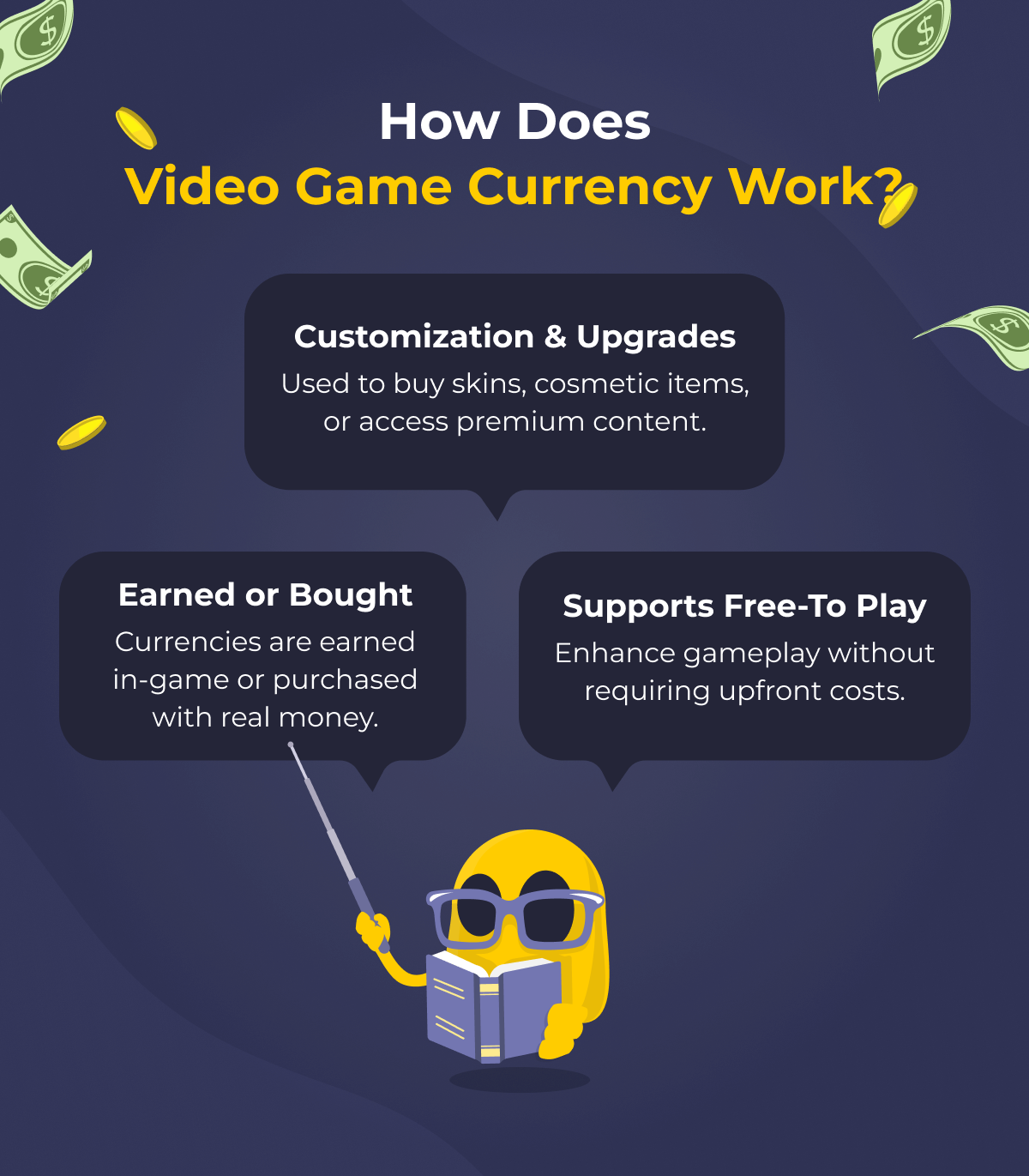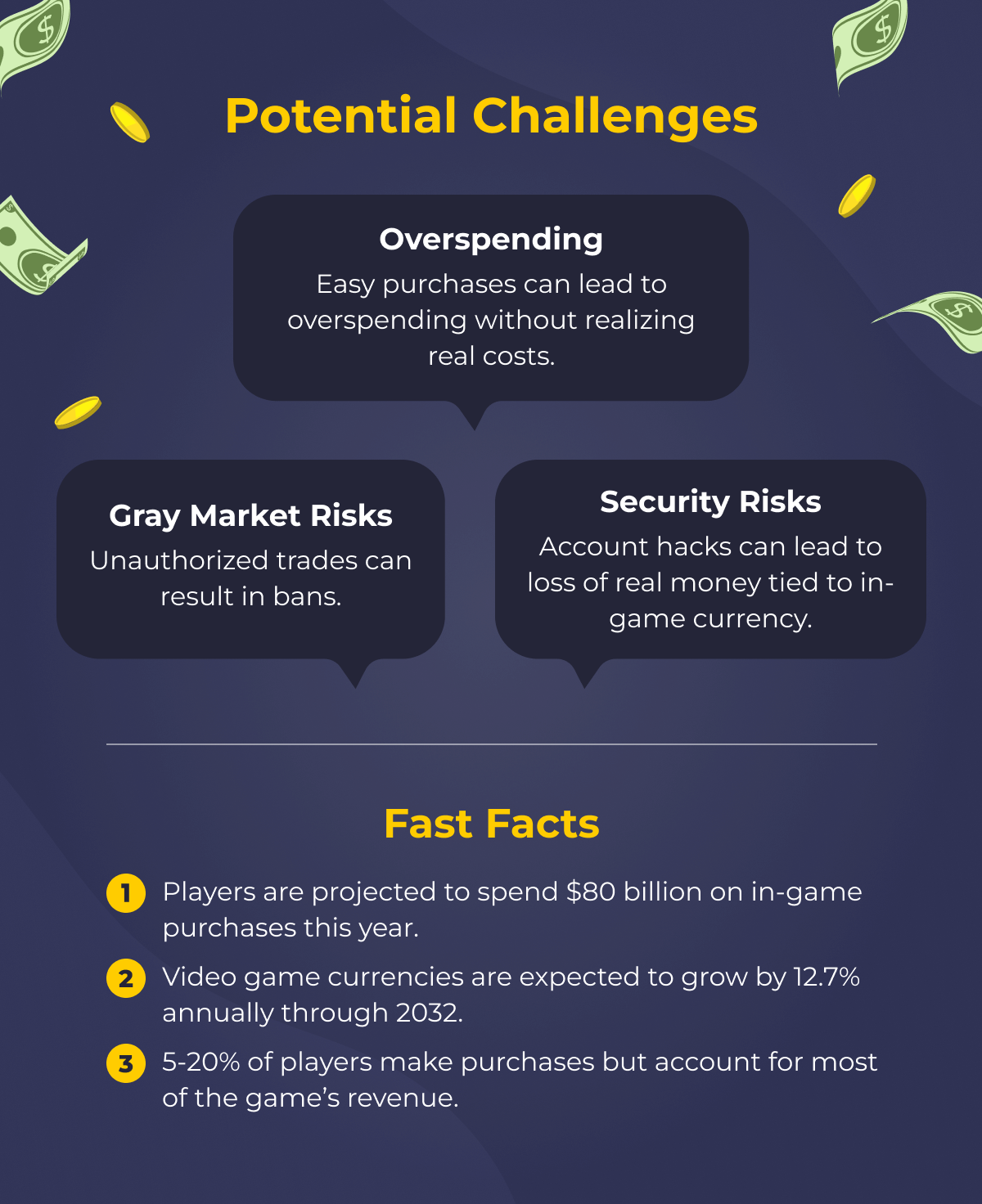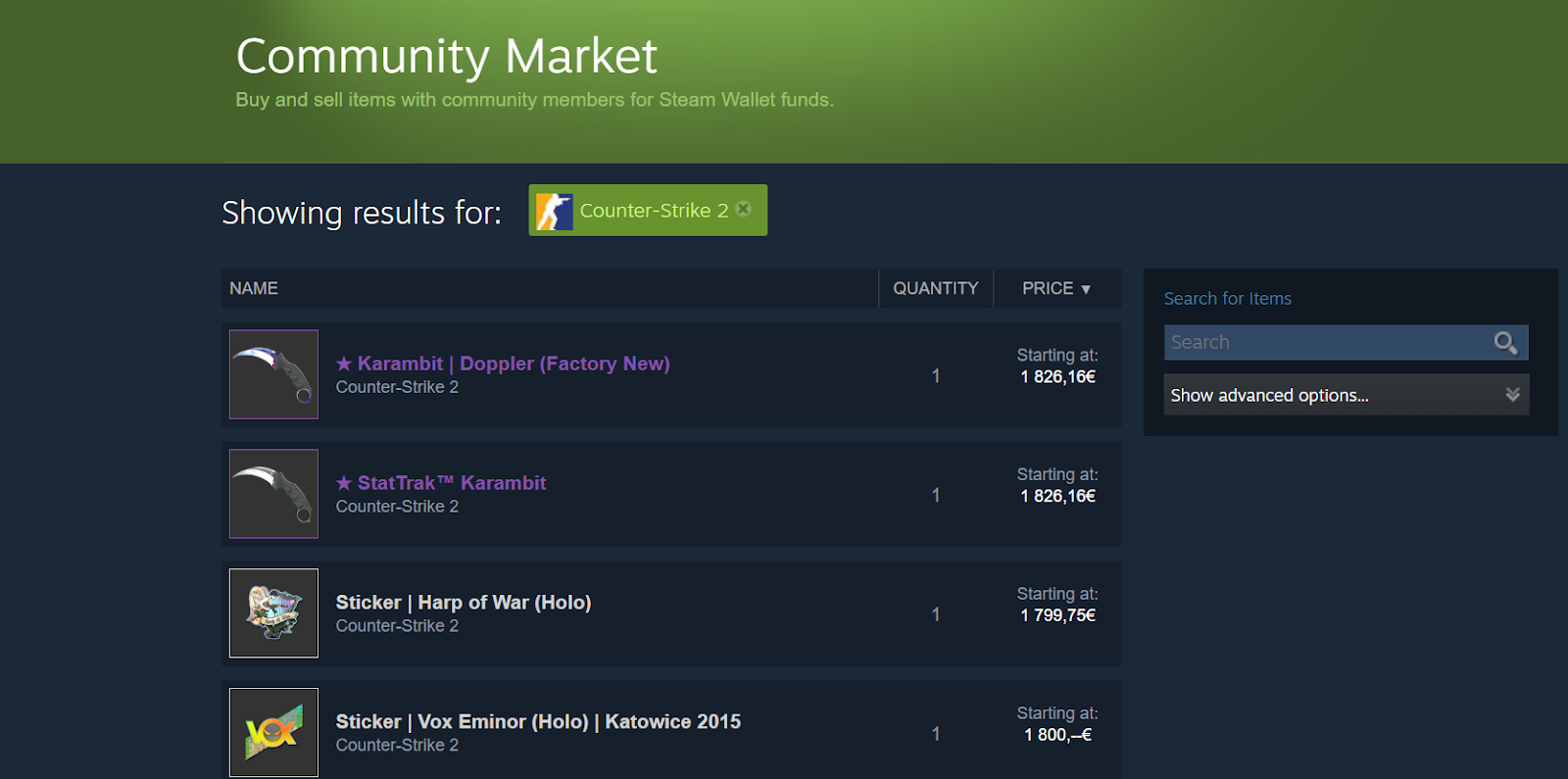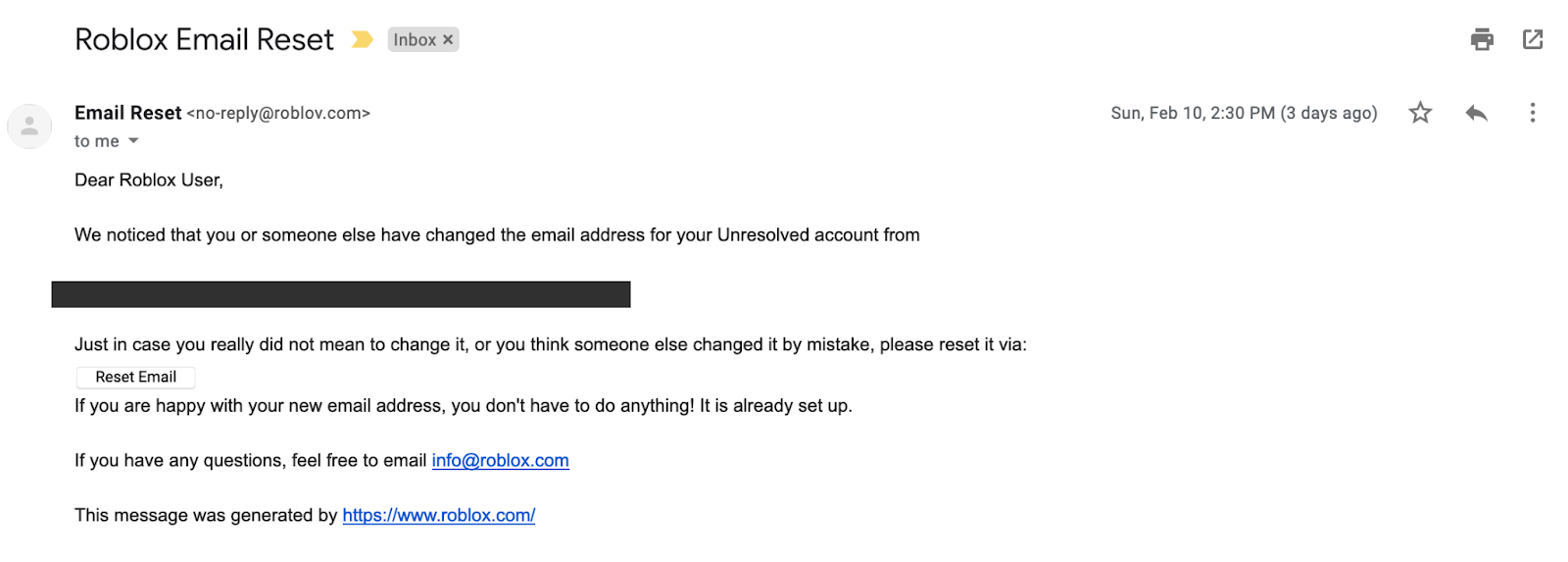In-game currencies have taken the gaming world by storm, fueling entire digital economies that shape how players interact with their favorite games. What started as a way to buy simple items or upgrades has evolved into a complex system, with virtual currencies like Fortnite‘s V-Bucks, Roblox‘s Robux, and World of Warcraft‘s gold now playing a huge role in how players experience gameplay.
As games get bigger and more advanced, these currencies have created intricate in-game economies, echoing real-world financial systems like supply and demand, market fluctuations, and even trading. Games like League of Legends and EVE Online show how something as simple as virtual currency can become a powerful force, shaping entire gaming ecosystems. But with these advancements come new risks. Scammers and security threats are on the rise, making it more important than ever to know how to stay safe.
Below, we’ll walk you through how to protect yourself in the world of virtual currencies, avoid scams, and why now is the time to buy a VPN to keep your gaming experience secure.
What are Virtual Currencies?

At their core, virtual in-game currencies are a form of digital money that players use within video games to enhance their experience. These currencies can be earned through gameplay or purchased with real-world money. They then enable players to buy a variety of features, from cosmetic upgrades to gameplay enhancements.
In most games, in-game currencies serve as the backbone of the player economy, allowing gamers to buy everything from skins and avatars to weapons, boosts, and special abilities. While these currencies can’t typically be exchanged for real money directly, they have become valuable assets in their own right within the gaming ecosystem.

However, the rise of microtransactions, loot boxes, and in-game currency systems—especially in free-to-play games—has drawn increasing scrutiny from regulators. Critics argue that these models not only encourage overspending, especially among younger players, but also expose them to scams and theft. The use of real money for virtual goods, combined with the allure of exclusive items, makes players vulnerable to fraudulent schemes, phishing attempts, and account hacks. More on this later.
Gaming Economies That Mirror the Real World
Some in-game economies have evolved to mimic real-world markets in surprisingly interesting and sometimes complex ways. Similar to the real world, some game economies are influenced by supply and demand, inflation, and market fluctuations.
In games with large player-driven marketplaces, such as EVE Online and World of Warcraft, the value of in-game items fluctuates based on scarcity, player needs, and developer updates. Players buy, sell, and trade items, responding to price fluctuations in the virtual market. In the case of EVE, this is done by using its ISK currency, while WoW uses Gold.
Acting somewhat like a central bank or government, developers play a central role in shaping these in-game economies. By controlling item scarcity, adjusting loot (items that can be picked up by the player to give them benefits) drop rates, and introducing new content, they have the power to influence supply and demand.
In certain games, developers even have to combat inflation, using “currency sinks”. These are mechanics designed to remove excess currency from the game, such as repair fees or rare collectibles with no in-game use. These tactics help maintain balance in virtual markets, preventing runaway inflation that could destabilize the in-game economy. Old School RuneScape even offers a slightly tongue-in-cheek item that’s a literal golden sink that players can buy for their house for a huge amount of its in-game currency.
The Evolution of In-Game Currencies
In-game currencies have changed a lot since their inception in the first online games. Here’s a quick breakdown of the past 20 years:
Early 2000s: Gold in MMORPGs (World of Warcraft, RuneScape)
Gold, earned through gameplay, was used to buy items in World of Warcraft and RuneScape. While not officially tied to real money, black markets emerged where this gaming gold was traded for cash.
Mid-2000s: Thriving Player-Driven Economies (EVE Online)
EVE Online’s complex economy saw large-scale trading and wars that impacted in-game markets. The “Bloodbath of B-R5RB” in 2014, for instance, resulted in $300,000 worth of virtual assets lost.
Mid-2000s: Linden Dollars in Second Life
Second Life introduced Linden Dollars, one of the first virtual currencies exchangeable for real-world money, allowing users to earn real income from virtual assets and services.
Late 2000s: Console-Based Currencies
Platforms like Xbox Live and PlayStation Network introduced Microsoft Points and PSN Wallet, making in-game purchases easier, though focused more on convenience than any kind of economic depth.
Early 2010s: Freemium Currencies (League of Legends, Clash of Clans)
Games like League of Legends and Clash of Clans popularized currencies like Riot Points and Gems, driving microtransactions for premium content such as skins and boosts.
Mid-2010s: Player Trading for Real Money (Roblox, CS:GO)
Roblox allowed developers to earn real money through Robux, while CS:GO saw a real-money market emerge for trading weapon skins, turning virtual assets into commodities.
Late 2010s: Battle Royale Monetization (Fortnite, PUBG)
Fortnite and PUBG relied on in-game currencies like V-Bucks and G-Coins for cosmetic items and battle passes, creating a revenue-generating microtransaction economy.
2020s: Integration with Real Economies (Roblox, Web3 Games)
Roblox continued integrating real-world transactions, while Web3 games like Axie Infinity and The Sandbox introduced blockchain currencies and NFTs, pushing virtual assets into real-world financial systems.
Games Where Virtual Cash Rules
Several games feature thriving in-game economies, where currencies like ISK, gold, and V-Bucks drive trade, investment, and player strategies. Below are key examples of these economies in action.

Eve Online (ISK)
-
- ISK as the foundation of the economy: ISK is the primary in-game currency and functions as a true free-market currency within EVE Online. Players use ISK for everything from purchasing ships and weapons to investing in corporations, making it central to the game’s player-driven economy. Unlike many games, ISK isn’t just a wrapper for fiat currency (USD, EUR, GBP, etc.)—it plays a vital role within the in-game world.
- Economic consequences of war: EVE Online features wars between player factions that significantly impact its in-game economy, often leading to resource scarcity, rising ship prices, and even market crashes. As mentioned above, the “Bloodbath of B-R5RB,” resulted in the destruction of assets valued at over $300,000 in real-world terms. These conflicts mirror real-world geopolitical struggles, where wars lead to market instability, shifts in supply, and financial losses.
- Corporation-scale financial strategies: Large player corporations operate like real-world businesses, pooling ISK and resources to fund massive projects like capital ship production or territorial expansion. These organizations employ strategic financial planning and resource management to dominate markets and maintain long-term economic control within the game’s universe.
Fortnite (V-Bucks)
-
- V-Bucks for microtransactions: V-Bucks is a currency purchased with real money and used to buy cosmetic items like skins and emotes in Fortnite. While V-Bucks hold no intrinsic value within the game world itself, they are the main way players access premium cosmetic content, acting as a bridge between real-world money and in-game purchases (and contributing to the game’s billions in revenue).
- Monetization through battle passes: Fortnite uses battle passes that offer exclusive cosmetic rewards, driving players to purchase V-Bucks to access premium content during seasonal events.
- No player-driven economy: Unlike many games with player-driven economies, V-Bucks don’t circulate among players and aren’t used for trading. Instead, all purchases go directly to developers, with V-Bucks acting solely as a conduit for real-world revenue.
Roblox (Robux)
-
- Robux as a purchased currency: Players primarily obtain Robux by purchasing it with real money through various payment methods. This currency is used to buy in-game items, skins, and access to experiences within Roblox.
- Earning through creation: Players can also earn Robux by creating games, virtual items, or experiences, which can be sold to other players, supporting a thriving creator economy.
- Robux-to-real-money exchange: Creators can convert earned Robux into real money via the Developer Exchange (DevEx) program, making Roblox one of the few platforms where virtual earnings can be turned into real-world income.
World of Warcraft (Gold)
-
- Gold as a tradable currency: World of Warcraft’s in-game currency, gold, is earned through quests, looting, and trading, and is the backbone of the economy. It is used directly within the game world to buy gear, consumables, and services, and its value fluctuates with supply and demand in the player-driven Auction House.
- Gold sinks to combat inflation: The game features gold sinks, such as expensive mounts, repairs, and other services, to remove excess gold from the economy and help control inflation.
- Black market impact: Real-world trading of gold through third-party sites has long been a challenge, leading to player bans and Blizzard’s introduction of legal alternatives like the WoW Token system, which allows players to buy game time with in-game gold.
Challenges of In-Game Currencies
While in-game currencies have become a major revenue stream for developers, their introduction brings several challenges that affect players and the gaming ecosystem.
Monetization and Ethical Concerns
Developers often use monetization strategies that push players to buy exclusive skins, boosts, and other items, which can only be obtained with real money. This becomes problematic when these tactics target younger or less financially aware players, leading to overspending. What starts as a fun gaming experience can easily turn into a financial burden, especially when microtransactions and loot boxes mirror gambling mechanics.
Currency Manipulation
Another common criticism involves how developers structure in-game currency bundles. Players often find themselves with leftover currency because bundles are sold in increments that don’t match item prices. This tactic encourages them to buy more to make use of the extra amount, creating a frustrating cycle of small purchases that stack up over time.
Exploitation of “Whales”
A significant portion of gaming revenue comes from “whales”—a small group of players who spend far more than average. Developers design monetization strategies with these big spenders in mind, offering exclusive high-end content that appeals to them. Psychological tactics, like the sunk-cost fallacy, play a role here, as whales may feel compelled to keep spending to justify their investment in the game.
Loss of Value and Volatility
Another major risk with virtual currencies is their fluctuating value. In-game economies are fragile—items that are rare and valuable today could become worthless after a game update or expansion. This volatility can lead to massive losses, particularly for players who have invested significant money in virtual assets. For example, in MMORPGs like World of Warcraft, new expansions often make older gear and resources obsolete, causing their value to plummet overnight.
Illicit Third-Party Markets and Trading of Virtual Assets
Gray markets for in-game currencies and items are widespread, allowing players to trade virtual assets for real money outside of official platforms. These markets operate without oversight of game makers, leaving players exposed to scams, fake listings, and unregulated transactions. The allure of rare items at lower prices may seem appealing, but many gamers find themselves paying for items that are never delivered or facing account bans for violating the game’s terms of service.
This issue is especially common in games like Roblox, World of Warcraft, and Runescape, where unauthorized trading of in-game currencies or assets can result in a permanent loss of access to accounts and assets. In these cases, players are not just risking their game progress but also the time and money invested.

For example, Counter-Strike 2 has one of the most lucrative skin-trading markets, with rare skins being sold for significant amounts of real money. While Steam offers an official marketplace, players often attempt to avoid high transaction fees, turning to grey markets to cash out their earnings. This has resulted in a massive underground trading network, with CS2’s skin market generating nearly $1 billion in 2023 alone. The game’s developers are actively trying to curb these unofficial transactions as they violate the game’s policies and disrupt the economy.
Developer Responses
In fact, developers like Blizzard and Jagex are actively banning players caught trading virtual currency for real-world money. To offer a legitimate alternative, Blizzard introduced the WoW Token system, which allows players to trade in-game gold for game time, keeping the transactions within the game’s economy. Similarly, Roblox enforces strict penalties for unauthorized Robux trades, often suspending or banning accounts involved in such activities.
Legal and Regulatory Challenges
As the trade of in-game currencies grows, it’s bound to draw more regulatory scrutiny. A key issue is whether these transactions will (or even should) be treated like traditional financial assets—particularly when players exchange virtual currencies or items for real money.
In terms of player protections, some EU countries like Belgium and the Netherlands have even classified loot boxes as a form of gambling. The European Parliament has called for clearer regulations on loot boxes, including displaying the odds of winning and linking virtual currencies to their real-world value, especially to protect minors. These proposals could lead to stricter consumer protection rules across Europe, addressing growing concerns over transparency and exploitation.
Top Scams to Watch Out for When Using Virtual Currencies
As in-game currencies have evolved to dominate virtual economies, they’ve also attracted bad actors who exploit these systems for profit. Beyond the ethical concerns around monetization, the real threat for players comes in the form of security risks. Hackers, scammers, and even gray-market traders target valuable in-game assets, leading to financial losses that often extend beyond the game itself.
Players can lose not only in-game assets but also the real-world money they spent to acquire them. Rare skins, special mounts, or virtual currency purchased with cash can all vanish, leaving players with little recourse. In many cases, recovering stolen assets is impossible, and once they’re gone, the real money invested is lost too. For players who have spent years building up their collections, the emotional and financial toll can be significant.
Below are the key risks and scams to be aware of, so you can protect your gaming assets and avoid falling victim to fraud.
1. Phishing Websites and Emails
Scammers create fake websites that mimic official game platforms or send emails that look like they’re from the game developers. These phishing attempts ask for login details, personal information, or payment credentials. Once entered, the scammer can take control of your account and steal in-game assets or real money.

Example:
You receive an email claiming your Roblox account is compromised, urging you to log in immediately to resolve the issue. The email contains a link to a fake Roblox login page. If you enter your credentials, the scammer now has access to your account, and your Robux or other assets can be drained.
2. Fake Giveaways and Free Currency Offers
Scammers promise free virtual currency (like V-Bucks or Robux) in exchange for personal information or login details. These offers usually target younger players or those looking for quick ways to get virtual currency without paying for it.

Example:
A social media post advertises “free V-Bucks” or a “Robux generator.” It directs you to a website where you’re asked to enter your game login details. Instead of getting free currency, you’re handing your account to the scammer, who can then steal your in-game assets.
3. Account Takeover via Trade or Sale Offers
Many games allow players to trade or sell in-game currency or items. Scammers exploit this by pretending to offer legitimate trades but then take your items and disappear, or they reverse the transaction once they gain access to your account.
Example:
In CS:GO, you agree to trade rare skins with another player. After you send your skins, the other player cancels the trade or sends fake items in return. This scam often occurs on third-party trading platforms, leaving you without your valuable skins and with no recourse to recover them.
4. Fake Virtual Currency or Gift Card Sales
Scammers set up online stores offering discounted virtual currency or gift cards. Once you pay, you either receive nothing or are sent a gift card or currency code that doesn’t work. These scams often pop up on social media, YouTube, or third-party auction sites.
Example:
You see an ad for half-price Roblox gift cards. After making a purchase, you receive either a fake code or nothing at all. The scammer takes your money, leaving you without the gift card or virtual currency.
5. Account Recovery Scams
Some scammers pose as account recovery specialists, offering to “help” retrieve hacked or locked accounts. They ask for personal details or payment upfront but never follow through with their promises, often further compromising your account.
Example:
After losing access to your World of Warcraft account, you come across an online service promising to recover it. You pay for the service and share your account information, but instead of recovering the account, the scammer takes control of it, stealing more assets or money.
6. In-Game Trade Scams
These scams occur within the game when players offer trades that seem legitimate but trick you into losing valuable items or currency. They may change the trade at the last moment, offering an item of lower value or one that looks similar but is worthless.
Example:
In RuneScape, a player offers a rare item in exchange for a large amount of in-game gold. Just before finalizing the trade, they swap the rare item for a less valuable one, tricking you into completing the transaction with no benefit in return.
6 Ways to Protect Your Gaming Assets
With so much at stake, here are the best methods for protecting yourself against the risks that come with engaging in these virtual economies:
1. Buy VPN for Comprehensive Protection
The security risks associated with virtual currencies are extensive, ranging from account hacks to data breaches. One of the most effective ways to defend against these threats is to buy a VPN protection. A VPN encrypts your internet connection, preventing hackers from intercepting sensitive data, including login credentials or payment details. Beyond encryption, VPNs also reduce the risk of DDoS attacks, which can be particularly disruptive in competitive gaming environments, reduce lag, optimize your network, and give you access to region-specific game content. Plus, by masking your IP address, a VPN adds a layer of anonymity, shielding you from identity theft and phishing schemes.
2. Enable Two-Factor Authentication (2FA)
Given the high value of in-game currencies and items, enabling 2FA is an absolute must. Even if someone gains access to your password, they won’t be able to log into your account without the second form of verification. This extra layer of protection is invaluable in preventing account takeovers that often result from phishing attacks or compromised login credentials.
3. Strengthen Your Passwords
A surprising number of players still use weak or repetitive passwords, leaving them vulnerable to attacks. Create strong, unique passwords for every gaming account, and avoid reusing passwords across different platforms. Hackers often exploit reused passwords to gain access to multiple accounts belonging to the same person. Use a password manager to securely store and generate strong passwords, ensuring your accounts stay protected.
4. Watch Out for Phishing Attacks
Phishing is one of the most common tactics used by scammers in the gaming world. Fake emails, websites, or in-game messages can trick you into sharing login information. Be suspicious of any message that prompts you to click a link or enter your details—especially those mimicking official sources like game developers or support teams. Always double-check URLs and verify the authenticity of the sender before responding.
5. Stay Vigilant with Account Monitoring
Keeping a close eye on your account activity is key to catching suspicious behavior early. Hackers often move quickly, so regularly monitoring for unusual login attempts or unauthorized transactions can prevent greater damage. If you notice any irregularities, such as sudden trades, purchases, or changes in account settings, take immediate action by changing passwords and notifying support.
6. Keep Your Software Updated
Outdated software is one of the easiest entry points for hackers. Developers frequently release patches and updates to address new security vulnerabilities, so always keep your games, devices, and security software updated. This ensures you’re protected against exploits that could leave your account and assets exposed.





